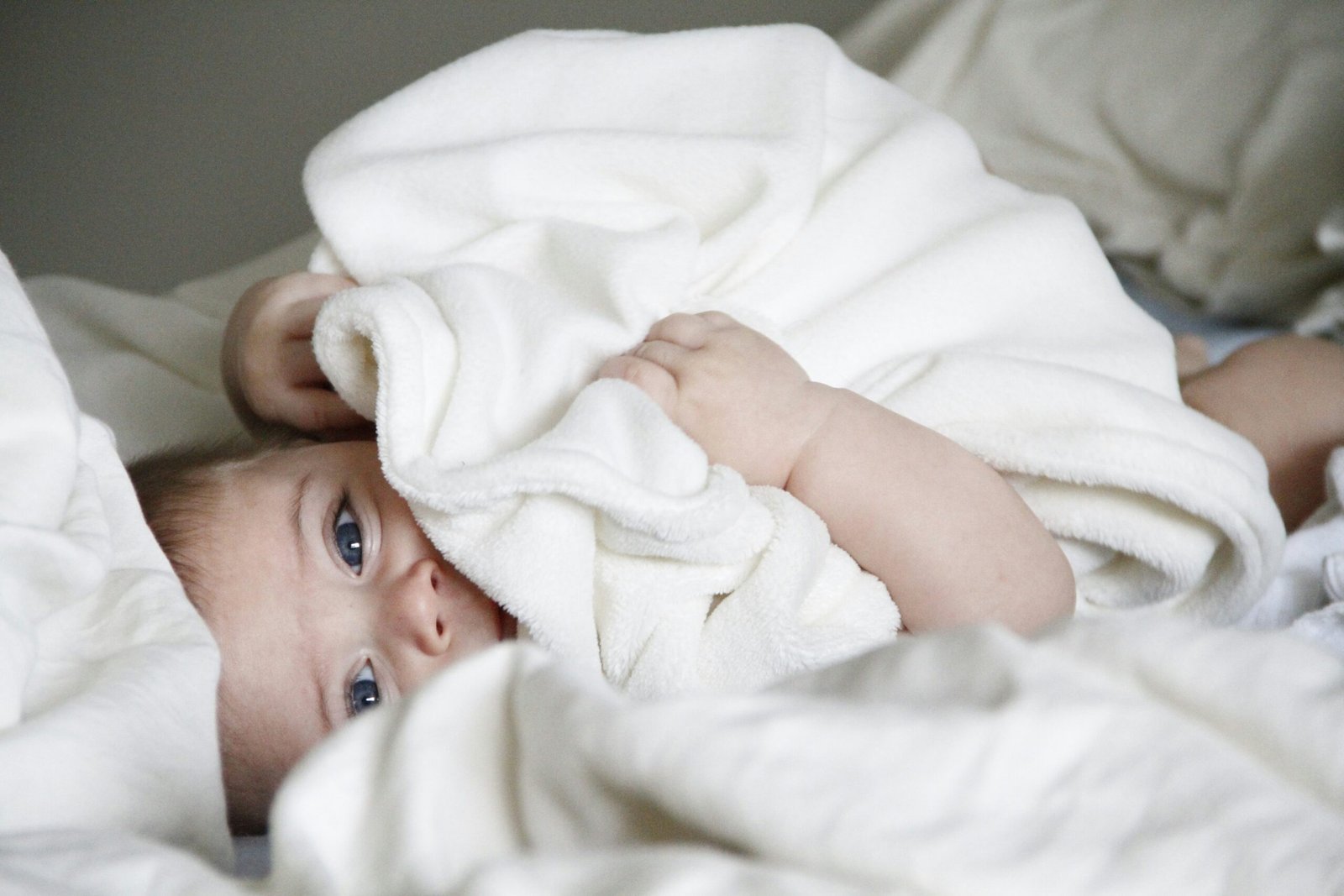Ad Blocker Detected
Our website is made possible by displaying online advertisements to our visitors. Please consider supporting us by disabling your ad blocker.

Taking care of your baby’s bath seat is essential for their hygiene and safety. Regular maintenance and cleaning can help prevent the buildup of dirt, bacteria, and mold, ensuring that your little one’s bath time remains a clean and enjoyable experience. In this article, you’ll learn some simple yet effective techniques to keep your baby’s bath seat in top condition, allowing you to provide them with a soothing and comfortable bath time routine.
General Guidelines
When it comes to maintaining and cleaning your baby’s bath seat, there are a few general guidelines you should follow to ensure the seat remains clean and safe for your little one. These guidelines will help you maintain the longevity of the bath seat and keep it in good condition.
Read the Manufacturer’s Instructions
Before you start cleaning your baby’s bath seat, it’s important to read and familiarize yourself with the manufacturer’s instructions. Each bath seat may have specific guidelines for cleaning and maintenance, so make sure to follow them accordingly. By following the instructions provided, you can ensure that you’re using the right cleaning methods and products, avoiding any potential damage to the seat.
Check for Damage
Before you begin cleaning, it’s essential to inspect the bath seat for any signs of damage. Look for cracks, tears, or any other structural issues that could compromise the seat’s safety and functionality. If you notice any damage, it’s important to stop using the seat immediately and contact the manufacturer for further guidance or consideration for replacement.
Choose the Right Cleaning Products
Selecting the appropriate cleaning products is crucial to ensure the bath seat remains clean and free from harmful bacteria or residue. Opt for mild, baby-safe cleaning solutions that are gentle on delicate skin. Using harsh chemicals or abrasive cleaners can damage the seat’s material or leave behind residue that could irritate your baby’s skin.
Daily Cleaning Routine
In addition to following the general guidelines, establishing a daily cleaning routine for your baby’s bath seat will help maintain its cleanliness and prevent any build-up of dirt or soap residue.
Remove Excess Water and Soap Residue
After each use, start by removing any excess water and soap residue from the bath seat. Use a soft, clean cloth or sponge to wipe away the water and gently remove any remaining soap. Make sure to pay attention to all the nooks and crannies, including the straps and buckles.
Wipe the Seat with a Clean Cloth
Next, take a clean cloth or sponge and dampen it with warm water. Wipe down the entire surface of the bath seat, paying close attention to areas that come into direct contact with your baby’s skin. This step will help remove any remaining dirt, bacteria, or residue that may have been missed during the initial rinse.
Dry the Seat Thoroughly
Once you’ve wiped down the seat, take a dry, absorbent towel and thoroughly dry the seat. Ensuring the seat is completely dry will help prevent the growth of mold and mildew, which can be harmful and difficult to remove. Remember to dry all parts of the seat, including the straps and buckles, before storing it away.
Weekly Deep Cleaning
In addition to your daily cleaning routine, it’s important to perform a weekly deep cleaning of the bath seat. This more thorough cleaning will help remove any build-up, stains, or lingering bacteria that may have accumulated over time.
Disassemble the Bath Seat (if possible)
If your baby’s bath seat is designed to be disassembled, take it apart carefully according to the manufacturer’s instructions. This will allow you to clean each individual component thoroughly and ensure no dirt or bacteria are hiding in hard-to-reach areas.
Clean the Seat with Warm Soapy Water
After disassembling the seat, prepare a mixture of warm water and mild baby soap or a baby-safe cleaning solution. Gently scrub the seat with a soft cloth or sponge, paying special attention to any stained or soiled areas. This step will help remove any dirt or grime that may have accumulated during regular use.
Rinse Thoroughly
Once you have scrubbed the seat with warm soapy water, rinse it thoroughly under clean running water. This will help remove any soap residue and ensure the seat is completely clean.
Sanitize the Seat
To eliminate bacteria and ensure your baby’s bath seat is thoroughly sanitized, consider using a baby-safe disinfectant or a mixture of water and white vinegar. Apply the solution to the seat and let it sit for a few minutes before rinsing it off. This will help kill any lingering bacteria and keep your baby safe and healthy.
Air-Dry or Towel Dry
After cleaning and sanitizing the bath seat, allow all the components to air-dry completely. If desired, you can also use a clean towel to gently dry any remaining moisture. Ensure that all parts, including the straps and buckles, are dry before reassembling the seat or storing it away.
Removing Stains and Build-Up
Over time, your baby’s bath seat may develop stains or build-up that can be challenging to remove. Follow these steps to effectively clean and restore the seat’s appearance.
Use Baking Soda Paste
To tackle stubborn stains or build-up, create a paste by mixing baking soda with a small amount of water. Apply the paste to the stained areas of the seat and let it sit for a few minutes. Baking soda is a gentle abrasive that can help lift stains and remove residue without damaging the seat’s material.
Apply Vinegar Solution
After letting the baking soda paste sit, create a vinegar solution by mixing equal parts water and white vinegar. Dip a clean cloth or sponge into the vinegar solution and gently scrub the stained areas of the seat. Vinegar is known for its stain-removing properties and can effectively dissolve build-up and lift stubborn stains.
Scrub Gently
During the stain removal process, it’s crucial to be gentle to avoid damaging the seat’s material. Use a soft cloth or sponge and scrub in small, circular motions. Avoid using abrasive scrub brushes or harsh chemicals, as they can cause scratches or discoloration.
Rinse and Dry
After scrubbing the stained areas, rinse the seat thoroughly under clean running water to remove any residue from the baking soda paste and vinegar solution. Once again, ensure that the seat is completely dry before reassembling or storing it.

Preventing Mold and Mildew
Mold and mildew can be a common issue when it comes to bath seats, especially if they’re not properly cared for and stored. To prevent the growth of mold and mildew on your baby’s bath seat, follow these tips.
Allow the Seat to Dry Completely
After each use and cleaning session, make sure to allow the bath seat to dry completely before storing it away. Mold and mildew thrive in moist environments, so ensuring the seat is dry will help prevent their growth.
Store in a Well-Ventilated Area
When not in use, store the bath seat in a well-ventilated area. Avoid storing it in a damp bathroom or any enclosed spaces that lack proper air circulation. A well-ventilated area will help prevent the accumulation of moisture and reduce the chances of mold and mildew growth.
Avoid Leaving the Seat in the Tub
Leaving the bath seat in the tub after each use can lead to excessive moisture and prolonged exposure to water. As soon as you finish using the bath seat, remove it from the tub and allow it to dry in a separate area. This simple step can significantly reduce the risk of mold and mildew formation.
Maintaining the Safety Features
Regularly inspecting and maintaining the safety features of your baby’s bath seat is crucial to ensure their well-being during bath time.
Regularly Inspect Straps and Buckles
Before each use, take a moment to inspect the straps and buckles of the bath seat. Check for any signs of wear, fraying, or damage. If you notice any issues, it’s essential to replace the damaged parts immediately to ensure the seat remains safe and secure.
Replace Damaged or Worn Parts
If any part of the bath seat becomes damaged or worn out over time, such as the seat cushion or straps, it’s vital to replace these parts promptly. Using a bath seat with compromised components can jeopardize your baby’s safety and increase the risk of accidents.
Follow Weight and Age Limits
Each bath seat has specific weight and age limits set by the manufacturer. It’s important to adhere to these limits to ensure your baby’s safety. Using a bath seat that exceeds the weight or age recommendations could lead to instability and potential injury.
Additional Tips
Here are a few additional tips to keep in mind when maintaining and cleaning your baby’s bath seat:
Avoid Harsh Chemicals
When cleaning the bath seat, avoid using harsh chemicals or abrasive cleaners. These can damage the seat’s material and potentially irritate your baby’s skin. Stick to mild, baby-safe cleaning solutions to ensure optimal safety and cleanliness.
Check for Recalls
Regularly check for recalls or safety alerts related to your baby’s bath seat. Manufacturers occasionally issue recalls if they discover any safety concerns or design flaws. Staying informed will help you ensure you’re using a safe product for your little one.
Keep Bath Seat Away from Sunlight
Direct exposure to sunlight can cause the seat’s material to fade or become fragile over time. To maintain the seat’s integrity, store it away from direct sunlight when not in use.
Keep an Eye on Your Baby at all Times
While a bath seat provides support and stability, it’s not a substitute for supervision. Always keep a close eye on your baby during bath time, regardless of whether they’re in a bath seat or not. Accidents can happen quickly, so it’s crucial to be attentive and present throughout the entire bathing process.
By following these guidelines and implementing proper cleaning and maintenance routines, you can ensure your baby’s bath seat remains clean, safe, and in excellent condition. Maintaining the seat’s cleanliness and functionality will contribute to your baby’s enjoyable and safe bathing experience.



